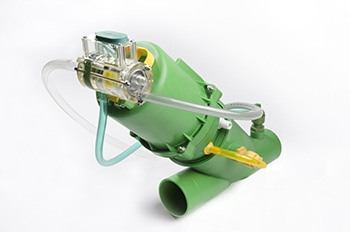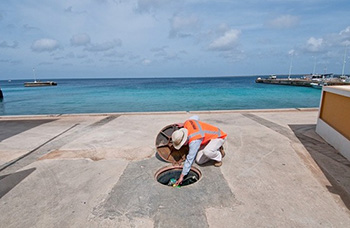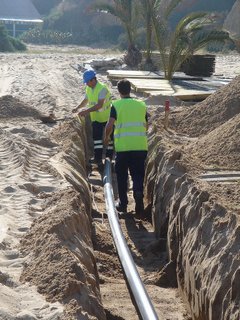- Inicio
- Sobre Flovac
- Alcantarillado por vacío
- Proyectos
- Proyectos de alcantarillado por vacío
- Sustitución de fosas sépticas
- Sistemas de alcantarillado para constructores residenciales
- Marinas y puertos
- Soluciones de alcantarillado desplegables Flovac
- Supermercados
- WC en barcos, trenes, aviones
- Complejos hoteleros
- Instalaciones industriales y riles
- Playas
- Instalaciones “indoor”
- Noticias
- Contactar
- Language
- Área Clientes
 English
English Español
Español
Flovac's Vacuum Sewerage System
In Flovac we are experts in solving sewerage difficulties in special geographic areas and in environmental sensitive areas with the vacuum technology
Flovac’s global engineering team understands the importance of local problems, be it a flooding, an earthquake, isolation (geographically), operational difficulties or environmental concern.
Flovac’s investigation and developing team focus in finding solutions to the sewerage difficulties using vacuum technology. This includes monitoring technology and solutions to save energy and water.
The company’s main strength is the approach of “system” for any project, assuring our implication from the design to the operational excellence.
Our services include: concept and budget design, vacuum station and net design, master planning, system audit, project management, system maintenance, active management platform and formation.
A vacuum sewerage system is a sewerage system that uses different air and gravity pressures to rapidly transport the wastewater from the pits to a vacuum station, through a pipe net. An amount of waste enters the vacuum system when Flovac’s valve opens in a pit and the wastewater are sucked out to the vacuum net. Flovac’s valve remains open shortly allowing the atmospheric air to enter in the suck out pipe and carry the wastewater to the vacuum station.
 The pit contains the Flovac’s vacuum valve, which has a 90mm diameter connection, and the sump for the wastewater in a single unit.
The pit contains the Flovac’s vacuum valve, which has a 90mm diameter connection, and the sump for the wastewater in a single unit.
When approximately 40 liters of water enter the sump from around 4 houses, a sensor pipe will open the valve, allowing the waste and later air to enter at 4-6 m/s speed. This sucking also assures adverse gas are evacuated from the pit, to prevent any dangerous situation.
In this moment of the process, there is no need of power, as all operations work in a pneumatic way.
PE Flovac’s pits are usually used, as they allow the separation between the sump and the Flovac’s valve, assuring that the workers are not in contact with the waste. The valve is always inside, providing an easy access for the worker so they don’t have to enter in a reduced space.
Flovac’s valve is made from polypropylene reinforced with glass fiber and it has a 78mm internal diameter. It’s designed to last 50 years and it only requires a small amount of replacements every 10 years.
The valve and the controller have been created to make the workers work easier. The controller is transparent and it can be easily disconnected from the valve’s body only pulling the union piece (no tools are needed). The valve’s upper section can be easily untwisted from the body to clear any unusual blockage.

The valve has also been made with the ability to be totally monitored, so a worker can remotely check any fail, as well as an infiltration, etc.
The vacuum pipe net goes from the pit to the vacuum station, carrying the wastewater and air.
The vacuum net can be made by PE or PVC pressure pipes and it’s designed to be near the surface, it only needs a 0.2% gradient. The system allows lifts to avoid the pipes to be too deep in the ground. As more lifts are installed, more hydraulic loses appear, reducing the net’s maximum distance.
A well designed system can reach up to 5km from the vacuum station to any direction. It’s important to have pits equally distributed around the station and all along the net to ensure having enough air, which is energy, entering the system.
Most systems are designed with 3-5 nets to reach an equilibrate water distribution and an efficient functioning.
 The vacuum station contains a vacuum deposit; discharge pumps to send the wastewater to the treatment plan; controls to automate the station and the vacuum pumps to maintain a negative pressure in the vacuum net.
The vacuum station contains a vacuum deposit; discharge pumps to send the wastewater to the treatment plan; controls to automate the station and the vacuum pumps to maintain a negative pressure in the vacuum net.
The vacuum pressure usually is between 0.5 and 0.7 bars.
FLOVAC
Flovac es la mayor empresa de ingeniería, suministro y operación de sistemas de alcantarillado por vacío del mundo.
Calle Primer de Maig 4
08980, Barcelona
España

CONTÁCTANOS
COPYRIGHT © 2021 FLOVAC - EL FUTURO VERDE DEL ALCANTARILLADO
